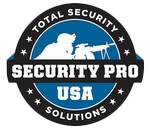
Do words such as bulletproof, bullet resistant, and brand names create a false sense of security? These kinds of questions swirl around the muddied waters following the recent police officer deaths by shooters like the Dallas Sniper. What are the answers to those questions when it comes to keeping police safer from organized assaults?
The National Institute of Justice provides a hint into the problem. Body armor standards are apparently voluntary as they say they have been setting voluntary body armor standards since 1972. [1] That is a long while and that also points to part of the problem. The danger to police from potential lethal attack is evolving. We just witnessed this fact in Dallas.
What is important is that we strip away all of the political rhetoric, remove the questions of why and start to focus on the question of how. When we do that we come to the stark realization that local law enforcement is not equipped, for the most part, to take fire from assault weapons. This is part of that evolution we discussed early. This is also part of why we bring up the marketing terms such as "bulletproof". In short, what stops a .22 projectile is likely not going to stop a round from an AR-15.
Ballistic Resistance Body Armor
There are grades of body armor that range from type II to type IV and an entire class of special types. For example, a type II rated armor piece is designed to "resist" 9mm .357 Magnum rounds. What happens if the caliber is bigger? If so, the bullet overpowers the "resistance" and pierces the armor and office behind it. Bulletproof is in a sense a false set of security. Did those Dallas police officers charge in to do their duty thinking they were protected? Did they simply not have a sufficient grade of armor? Likely, that story is a little of both.
This brings up a bigger question
How do police function and to their daily jobs and remain protected? It is impractical to run around in type IV armor and yet the evolution of violence has pretty much demanded that officers do. What is shocking about the Dallas snipping event is that it elevates the violence and changes the rules. Now, officers must scramble to prepare for a more realized and deadlier type of attack. How do they do that?
- Protocols must change and likely on a national level so that armor protocols are standardized by call-type.
- Responding officers should haveIV rated armor Even if that requires changing into higher grade armor.
- Police chiefs must be willing to remove the weakest link —armor that does not meet new guidelines.
- Gather information from companies that sell body armor such as Security Pro USA. As protocols change, that information needs to be incorporated. There are many types of body armor and experts who work with all of these types can help save officer lives.
The weakest link is that tool or piece of equipment that allows a bullet to pierce armor. We don't know what type of gun a shoot may deploy. How then do we prepare to engage the enemy? Bullet resistance is folded cloth. Body armor includes metal plates. The difference is seen in lives lost versus lives saved.
- Security Pro USA Rapid Response Kit NIJ Level III
- Security Pro USA Deluxe Shooter's Package NIJ IV Stand Alone
- Security Pro USA Gladiator Beast Package NIJ IV Stand Alone
Security Pro USA is focused on one thing — saving lives. We are willing to ask the hard questions so that we find solutions to pressing problems. We equally value and respect the work that police officers do, and understand the challenges that they face. For expert advice on all types of armor visit us online and shop, compare products or chat with one of our professionals or call us toll-free at (800) 264-8273 for questions or quotes.

0 comments